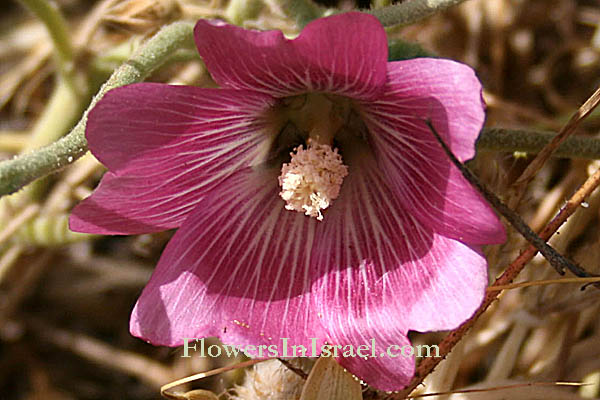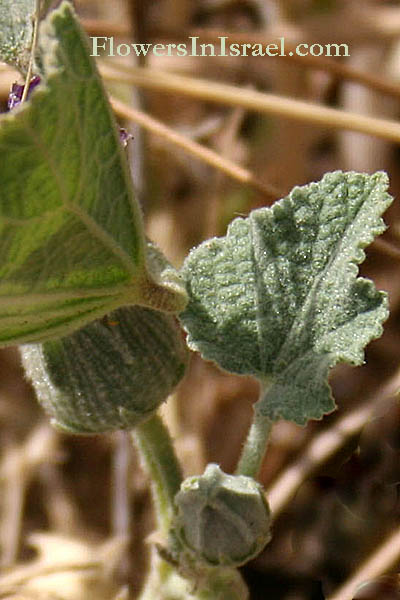Stemless Hollyhock,
Hebrew: חוטמית עין הפרה, Arabic: ختمية زاحفة
| Scientific name: | Alcea acaulis (Cav.) Alef. | ||
| Synonym name: | Althaea acaulis Cav. | ||
| Common name: | Stemless Hollyhock | ||
| Hebrew name: | חוטמית עין הפרה | ||
| Arabic name: | ختمية زاحفة | ||
| Family: | Malvaceae, חלמיתיים |

|
| Life form: | Chamaephyte, semi-shrub | |
| Stems: | Almost stemless | |
| Leaves: | Alternate, entire, dentate or serrate | |
| Flowers: | Pink, purple, white | |
| Flowering Period: | March, April, May | |
| Habitat: | Batha, Phrygana | |
| Distribution: | Mediterranean Woodlands and Shrublands, Semi-steppe shrublands, Shrub-steppes | |
| Chorotype: | Mediterranean | |
| Summer shedding: | Perennating |

Derivation of the botanical name: Alcea, alkaia, αλκεα (Greek), according to Dioscorides: a kind of mallow; a poisonous plant. acaulis, ακαυλοϛ, stemless, or with only very short stems. The Hebrew word: חוטמית, chotmit from a bulge, the “staminal column” or “stamen tube”, arising from the centre of the flower, reminiscent of a snout and originates from the name in Arabic, Khatima.
|